
Brainstorm Security Shop

For Orders Over $199

On Any Of Our Products

Details On Refund Page
If you’re looking to enhance your personal safety in an efficient and discreet manner, a stun gun could be the solution you’ve been seeking. With the ability to incapacitate an attacker swiftly from a distance, stun gun for personal safety provide a non-lethal yet effective means of protection. But before you make a decision, there are essential factors to consider that go beyond just the device itself. Understanding the legal implications, proper training techniques, and maintenance requirements are vital aspects that can impact your overall safety strategy.
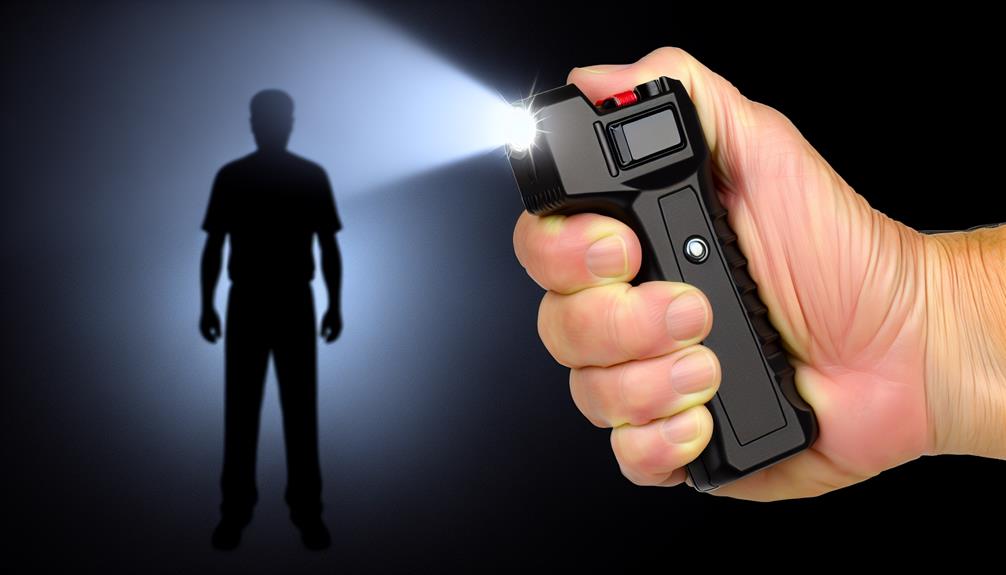
Enhance your personal safety with the convenience and effectiveness of a stun gun. A stun gun is a powerful tool that can provide you with a sense of security and protection in various situations.
One of the key benefits of using a stun gun is its ability to incapacitate an attacker quickly and effectively, giving you the opportunity to escape and seek help. Unlike other self-defense tools, such as pepper spray or tasers, stun guns don’t require close proximity to the attacker, allowing you to maintain a safe distance while still being able to defend yourself.
Additionally, stun guns are easy to carry and conceal, making them a practical option for individuals looking to enhance their personal safety without drawing attention to themselves.
The loud crackling sound and bright electrical arc produced by a stun gun can also serve as a deterrent, potentially scaring off potential attackers before any physical confrontation occurs.
To understand how stun guns work, consider their mechanism of action in incapacitating potential threats efficiently and effectively. Stun guns operate by delivering a high-voltage, low-current electrical charge to the body of the target upon contact. When the stun gun is pressed against the target and the trigger is pulled, electrical pulses are released, causing an intense and painful shock. This shock disrupts the normal functioning of the body’s neuromuscular system, leading to involuntary muscle contractions and impairing the ability to move temporarily.
The electrical charge from the stun gun interferes with the communication between the brain and muscles, resulting in disorientation and loss of balance. The pain and muscle contractions induced by the shock can incapacitate an attacker, providing you with an opportunity to escape or seek help.
Stun guns are designed to be non-lethal and are meant to subdue threats without causing permanent harm. Understanding the basic principle behind stun guns can help you utilize them effectively in self-defense situations.
Understanding the voltage and power output of stun guns is crucial for assessing their effectiveness in incapacitating potential threats. Stun guns typically have voltages ranging from 50,000 to 1,000,000 volts. Despite the common belief that higher voltage means greater stopping power, it’s actually the current that plays a more significant role in incapacitating an attacker.
Stun guns deliver a high-voltage, low-current electrical charge to disrupt the body’s normal electrical signals, causing muscle contractions and disorientation.
The power output of a stun gun is measured in microcoulombs (μC), which indicates the amount of electrical charge delivered per second. Higher microcoulomb ratings generally mean that more charge is being delivered, leading to a more intense shock. Stun guns with higher microcoulomb ratings can penetrate thicker clothing layers and deliver a more effective shock even if the attacker is wearing heavy clothing.
When choosing a stun gun for personal protection, consider both the voltage and power output to ensure you have a device that can effectively deter potential threats.
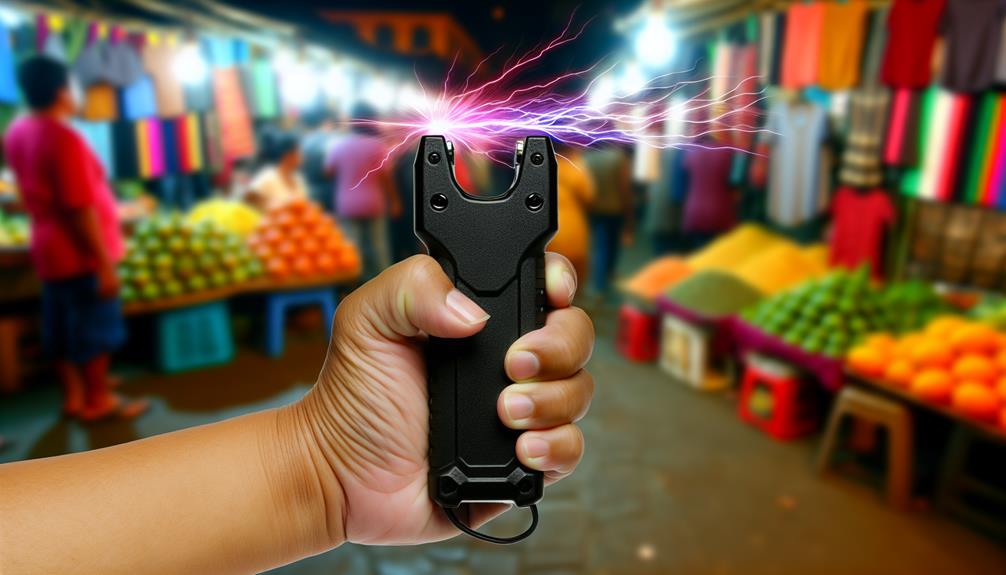
Comparing stun guns to pepper spray can help you understand the differences in self-defense options available for personal safety. Stun guns deliver an electric shock to incapacitate an attacker, while pepper spray is a non-lethal deterrent that causes temporary blindness and difficulty breathing.
Stun guns are effective at close range and require direct contact with the assailant to deliver the shock. They’re ideal for situations where physical contact may be necessary for protection.
On the other hand, pepper spray can be used from a distance, providing a safe way to defend yourself without getting too close to the threat.
When choosing between a stun gun and pepper spray, consider factors such as ease of use, effectiveness, and legal restrictions in your area. Stun guns may require more skill to operate effectively, while pepper spray is straightforward and can be used by anyone.
Additionally, some regions have specific regulations regarding the possession and use of stun guns, so it’s essential to be aware of the laws in your area before making a decision.
Consider checking the laws in your area regarding the possession and use of stun guns before making a purchase. Stun gun laws vary by state and even by city, so it’s crucial to ensure you’re compliant with local regulations.
In some places, stun guns are completely prohibited, while in others, there may be restrictions on who can own or carry them. Before buying a stun gun, research the specific statutes and regulations that apply to your location.
Some states require a permit to carry a stun gun, while others have age restrictions or limit the places where they can be carried. Understanding the legal framework surrounding stun guns will help you avoid any potential legal issues in the future.
Additionally, be aware that even if stun guns are legal in your area, the laws regarding their use may also differ. Using a stun gun inappropriately or in a prohibited manner could lead to serious consequences.
Therefore, it’s essential to familiarize yourself with both the possession and usage laws governing stun guns in your jurisdiction.
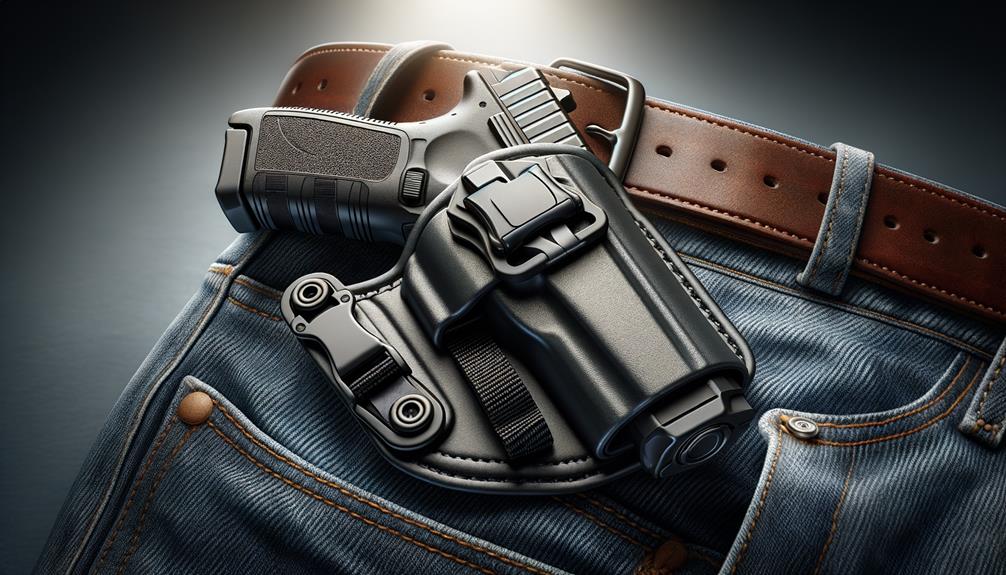
Before using a stun gun, ensure you receive proper training on how to safely and effectively operate the device. Training is crucial to understand the mechanisms of a stun gun, how to aim accurately, and when to use it. Familiarize yourself with your state’s laws regarding stun gun use, as regulations can vary. Remember, a stun gun is a tool for self-defense, not a toy. When handling a stun gun, always keep it away from children and store it in a secure place. Practice proper handling techniques to prevent accidental discharge.
To ensure safety, never test-fire the stun gun close to your body or anyone else. Maintain a safe distance between you and the target when using the device. Aim for large muscle areas for maximum effectiveness. In case of accidental exposure, seek medical attention immediately. Remember that a stun gun is a non-lethal weapon designed to incapacitate an attacker temporarily. Always prioritize your safety and the safety of others when using a stun gun.

When selecting a stun gun, it’s important to consider factors like size, voltage, and additional features to ensure it meets your personal protection needs effectively. Size matters because you want a stun gun that’s easy to carry and handle in case of an emergency. A compact stun gun can fit in your pocket or purse for convenient access.
Voltage is another crucial consideration. Higher voltage stun guns are more effective in incapacitating an attacker, but make sure to check your local regulations as some areas have restrictions on voltage levels.
Additionally, think about the features that would best suit your needs. Some stun guns come with built-in flashlights, safety features like disable pins, or rechargeable batteries for convenience.
Take the time to research and compare different options before making a purchase to ensure you find the right stun gun to keep you safe.
To ensure your stun gun remains in optimal condition for self-defense, regularly inspect its components for any signs of wear or damage. Start by checking the outer casing for cracks or loose parts that could impact the functionality of the device. Ensure the safety switch operates smoothly and without resistance to guarantee quick access in case of emergency.
Additionally, keep the electrodes clean and free of debris that could interfere with their ability to deliver a charge effectively. Use a soft, dry cloth to wipe them down regularly. Remember to test the stun gun periodically to ensure it charges properly and delivers the intended shock upon activation.
Store your stun gun in a cool, dry place away from direct sunlight or extreme temperatures. Avoid exposing it to moisture or humidity, as this can damage the internal components.
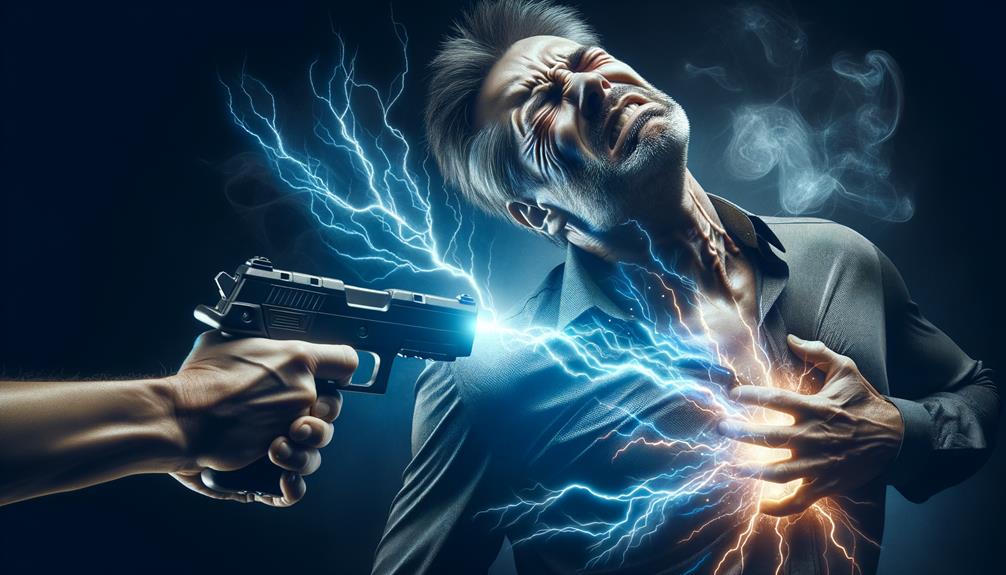
In conclusion, a stun gun can be a valuable tool for personal protection, offering a safe and effective way to incapacitate an attacker from a distance.
With proper training and maintenance, stun guns can provide peace of mind and added security in potentially dangerous situations.
Remember to always prioritize safety and legality when considering the use of a stun gun for self-defense.
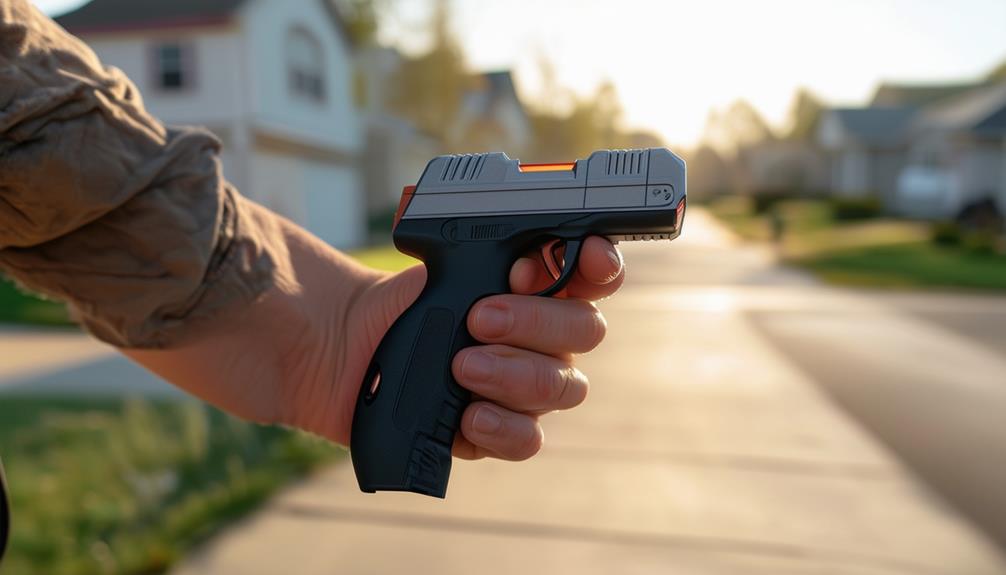
Brainstorm Security Shop
1867 Caravan Trail
Ste 105
Jacksonville, FL 32216
Call us toll free: (800) 859-5566